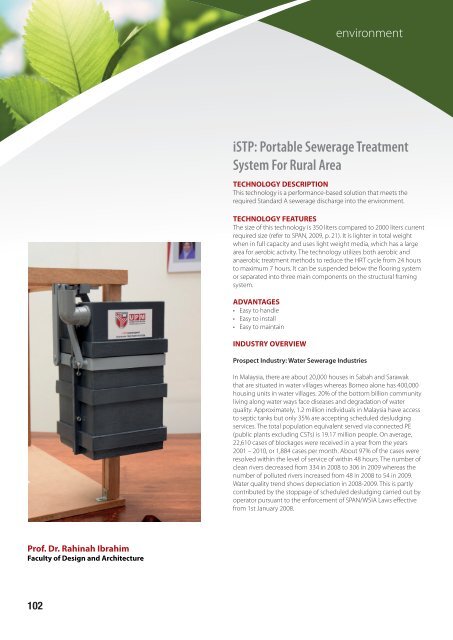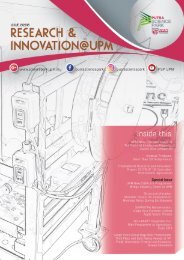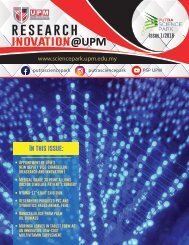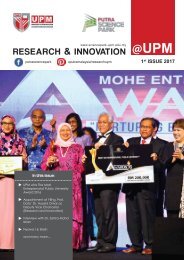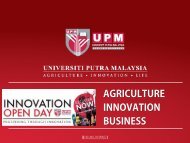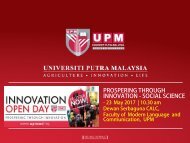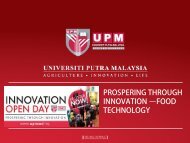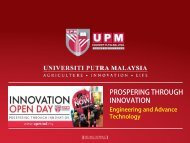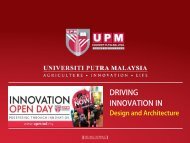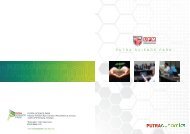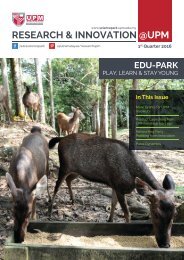Innovation directory 4th edition
You also want an ePaper? Increase the reach of your titles
YUMPU automatically turns print PDFs into web optimized ePapers that Google loves.
environment<br />
iSTP: Portable Sewerage Treatment<br />
System For Rural Area<br />
TECHNOLOGY DESCRIPTION<br />
This technology is a performance-based solution that meets the<br />
required Standard A sewerage discharge into the environment.<br />
TECHNOLOGY FEATURES<br />
The size of this technology is 350 liters compared to 2000 liters current<br />
required size (refer to SPAN, 2009, p. 21). It is lighter in total weight<br />
when in full capacity and uses light weight media, which has a large<br />
area for aerobic activity. The technology utilizes both aerobic and<br />
anaerobic treatment methods to reduce the HRT cycle from 24 hours<br />
to maximum 7 hours. It can be suspended below the flooring system<br />
or separated into three main components on the structural framing<br />
system.<br />
ADVANTAGES<br />
• Easy to handle<br />
• Easy to install<br />
• Easy to maintain<br />
INDUSTRY OVERVIEW<br />
Prospect Industry: Water Sewerage Industries<br />
In Malaysia, there are about 20,000 houses in Sabah and Sarawak<br />
that are situated in water villages whereas Borneo alone has 400,000<br />
housing units in water villages. 20% of the bottom billion community<br />
living along water ways face diseases and degradation of water<br />
quality. Approximately, 1.2 million individuals in Malaysia have access<br />
to septic tanks but only 35% are accepting scheduled desludging<br />
services. The total population equivalent served via connected PE<br />
(public plants excluding CSTs) is 19.17 million people. On average,<br />
22,610 cases of blockages were received in a year from the years<br />
2001 – 2010, or 1,884 cases per month. About 97% of the cases were<br />
resolved within the level of service of within 48 hours. The number of<br />
clean rivers decreased from 334 in 2008 to 306 in 2009 whereas the<br />
number of polluted rivers increased from 48 in 2008 to 54 in 2009.<br />
Water quality trend shows depreciation in 2008-2009. This is partly<br />
contributed by the stoppage of scheduled desludging carried out by<br />
operator pursuant to the enforcement of SPAN/WSIA Laws effective<br />
from 1st January 2008.<br />
Prof. Dr. Rahinah Ibrahim<br />
Faculty of Design and Architecture<br />
102


